This week I had the opportunity to spend a couple hours with Lynda Barry.
Lynda Barry is a cartoonist, writer, teacher and creative wizard. Her comic Ernie Pook's Comeek was published in a variety of newspapers for nearly 30 years (Drawn & Quarterly reissued a collection called The Greatest of Marlys). She has also written four bestselling and acclaimed creative how-to graphic novels: What It Is, Picture This, Syllabus: Notes From an Accidental Professor and Making Comics.
She was inducted into the Cartoonist’s Hall of Fame in 2016 and was awarded the MacArthur “Genius Grant” in 2019.
Needless to say, she is extremely talented, influential and prolific. She’s also down to earth, funny and full of energy.
Flashback: last summer I was preparing to transition to teaching full-time so I picked up Syllabus because it chronicles her first couple semesters teaching.
Little did I know it was the syllabus, notes and lessons from her first class at The University of Wisconsin-Madison!
Wait, she teaches at UW?! We will be colleagues?! How is that even real?! Seems like it should be illegal!!
Fast forward to today: we teach on the same floor, just opposite sides of the building.
Last week I sent her an email to see if we could chat about teaching (Re: Help Please!!). I spent an afternoon in the comics room where I got a new name, ate some candy and learned a lot.
The room is covered floor to ceiling in comics, drawings and color. It’s the brightest room in the whole building and it radiates energy.
Below are five things inspired by our conversation, her teaching philosophy and what it means to be creative.
1:
Cultivate creative space and community will grow.
I want each of my classes to be a tight-knit community, but I’m not sure how to facilitate those types of relationships as the teacher. Saying, “Y’all should be friends!” to a bunch of college students is not effective.
How do I create a safe space for students to explore new ideas with each other? How do I make sure students are comfortable in uncomfortable classrooms? How can school (homework, projects, grades) become a source of joy instead of dread?
Lynda Barry knows how to do this.
She puts students of all different skill levels next to each other in class because learning always goes both ways. Everyone is equal, everyone is learning, everyone is growing (including the teacher).
Every person that takes a comics class picks a comics room name. She currently goes by Professor Capybara and I was christened as Iron Lung.
🤘 IRON LUNG 🤘
Mitchell was given to me, but I chose Iron Lung. In this classroom I control my identity. Some of the wonderful people I met that day had great names: Rabbit, Roy G. Biv and Wizard Glass.
A small table just inside the door was covered in sugary treats. Professor Capybara said, “I don’t eat candy but the students love it. I find it really amps them up (laughs).”
Multiple students came over to show work to their teacher during our conversation. Professor Capybara would say, “Hello (comics room name), what have you got?” and then run off to grab supplies or print a copy of their drawing. They were there to get their work done and she was there to help in any way possible.
I’ll be spending more time in the comics room so I can borrow some of its energy for the other side of the building and figure out how to cultivate space so community can grow.
2:
“I love helping people blow their minds with their own minds.” -L.B.
During our conversation she said, “Most people stop drawing around age ten when they realize they can’t draw a nose or hands. What I’m doing isn’t teaching, it’s showing people they already know how to do this stuff.”
In her classes she leads students through exercises that help them get out of their own head and prove their 10-year-old self wrong. Not in a, “I can finally draw!” kind of way, but a, “drawing is about so much more than a realistic nose,” kind of way.
She talks about it in this interview:
I’m interested in walking people back into drawing, but unhitching it from having to pull the wagon of art, more of drawing as a way of thinking.
Drawing is no longer about technical execution (Is the foreshortening on the left arm correct?) but instead about telling stories, conveying emotions and attempting to capture life in an image. Drawing becomes a way to communicate and what is transferred from artist to viewer is the art.
Most people can’t draw realistically so they don’t draw at all. My drawing ability (or inability) made me self-conscious so I’ve avoided drawing for most of my life. I recently started drawing in a sketchbook that’s actually a daily planner and started caring less about the final result which has helped immensely.
Approaching drawing as a way of thinking has helped me enjoy the process.
3:
Don’t get lost in software.
We talked a lot about technology and software. She had a laptop plugged into a TV playing music and a printer, but those were the only devices in sight. In stark contrast, my graphic design classroom boasts 15 large iMacs, multiple 3D printers, a large format printer and two TVs (plus all the laptops and iPads students bring to class).
It’s very important for a designer or artist to know how to use their tools because it allows them to make the things they want to make. A carpenter needs to know how to use a saw and a drummer needs to know how to keep a beat. But what happens when those tools become more important than what they help produce?
Almost all design today is made digitally. You could be a designer in 2024 and never touch a piece of paper or a pencil even though digital software hasn’t been around that long. Photoshop is 36 years old, Procreate is 13 and Figma is just 8. People had been doing graphic design without computers for a long time before Adobe ever existed.
Before computers all design was made by hand. This video is a little cheesy but helps explain how some of it was done. There were of course tools to help designers with precision like rulers, tape, glue, Letraset, Rapidograph pens, white out and Bristol board. But at the end of the day it was up to the designer and what they were able to achieve with their own hands.
In regards to software, designer Lucille Tenazas said:
...it is so superficial. The machine is doing all the work for you. Of course, you're giving the commands, which of course I'm not denying that the artist, the designer, is behind all these, and is generating the actions, but isn't it great if your body is actually the one doing it?
I have found that the level of precision you can achieve instantly with a computer can actually be crippling. Because you can be exact right away it’s easy to get lost in the small details before you really begin. I’ve found myself adjusting the small spaces between letters in a headline before I’ve even considered the overall layout.
I don’t have a conclusion for this point because I’ll keep thinking about it for a long time. What is the relationship between software and design? Is it a symbiotic or parasitic relationship? What sort of value do analog techniques bring to a digital design practice? Access to software has helped democratize design (which is great!) but it has also made it easier to produce bad design faster than ever before.
We gained a lot with the computer, but what have we lost?
4:
Copy others and make bad stuff on purpose.
Copying others is an important part of her practice and classes. In the hallway outside her classroom hang comics and drawings students have copied from other artists. Not tracings, but copies. They’re subtly different than the original but familiar characters appear here and there. So what’s the point of copying?
Learning.
Copying others helps you learn how they did what they did (technically, conceptually, practically) and encourages you to develop your own voice (unique style, techniques, preferences). They did it that way, what would happen if I did it this way?
wrote an entire book about this. In Steal Like an Artist he writes:It's in the act of making things and doing our work that we figure out who we are.
Steal Like an Artist does a great job of explaining the correct way to learn from others.
Barry encouraged me copy famous artists, my friends and even my son. Copy to learn and to get in the habit of making marks.
In Syllabus she writes:
We know that athletes, musicians and actors all have to practice, rehearse, repeat things until it gets into the body, the “muscle memory,” but for some reason, writers and visual artists think they have to be inspired before they make something, not suspecting the physical act of writing or drawing is what brings that inspiration about.
Don’t know what to make? Copy something! Or make something bad on purpose.
During our conversation she said, “Do you have students make bad posters on purpose?” Then she rattled off a handful of potential projects for my class:
Make an ad for something that nobody would actually sell, like a human tooth!
Make a horror movie poster for something that isn’t scary at all!
Draw a movie poster by hand then stop halfway through and ask, “Is it bad enough?” and then take advice on how to make it worse!
Okay, but aren’t we in school to get better at design? Shouldn’t the goal be excellence, craftsmanship and quality products? I think the key to making bad things on purpose lies in what happens after. You just made the worst thing you’ll ever make! Anything you do now will be wonderful in comparison! Go forth in confidence! The pressure is off.
These terrible posters would also hopefully inspire discussions about good vs bad, what those words even mean and who gets to decide.
5:
“I was going to think of that!” -L.B.
Towards the end of our time together I told Professor Capybara I had come up with two potential options for a comics room name: Iron Lung or Daddy Long Legs (I’m 6’3”). She said, “Daddy Long Legs is cool, but Iron Lung is awesome. I was going to think of that!”
Then she said, “That’s a compliment my friends and I give each other.”
I love it.
Here are some links if you want even more Lynda Barry:
The Secret to Drawing People with
fromMy favorite interview of her from Q with Tom Power
Her Instagram where she posts personal drawings and student work
Austin Kleon’s archives for “Lynda Barry”
Lynda Barry on Late Night with David Letterman in 1988
ALSO:
Totally unrelated: a zine I made by stapling four index cards together.
“Someday, when I get bigger, bigger, bigger, I will be a teacher, too, like Lynda Barry and my daddy.”
Thanks for reading! See you next week 👋




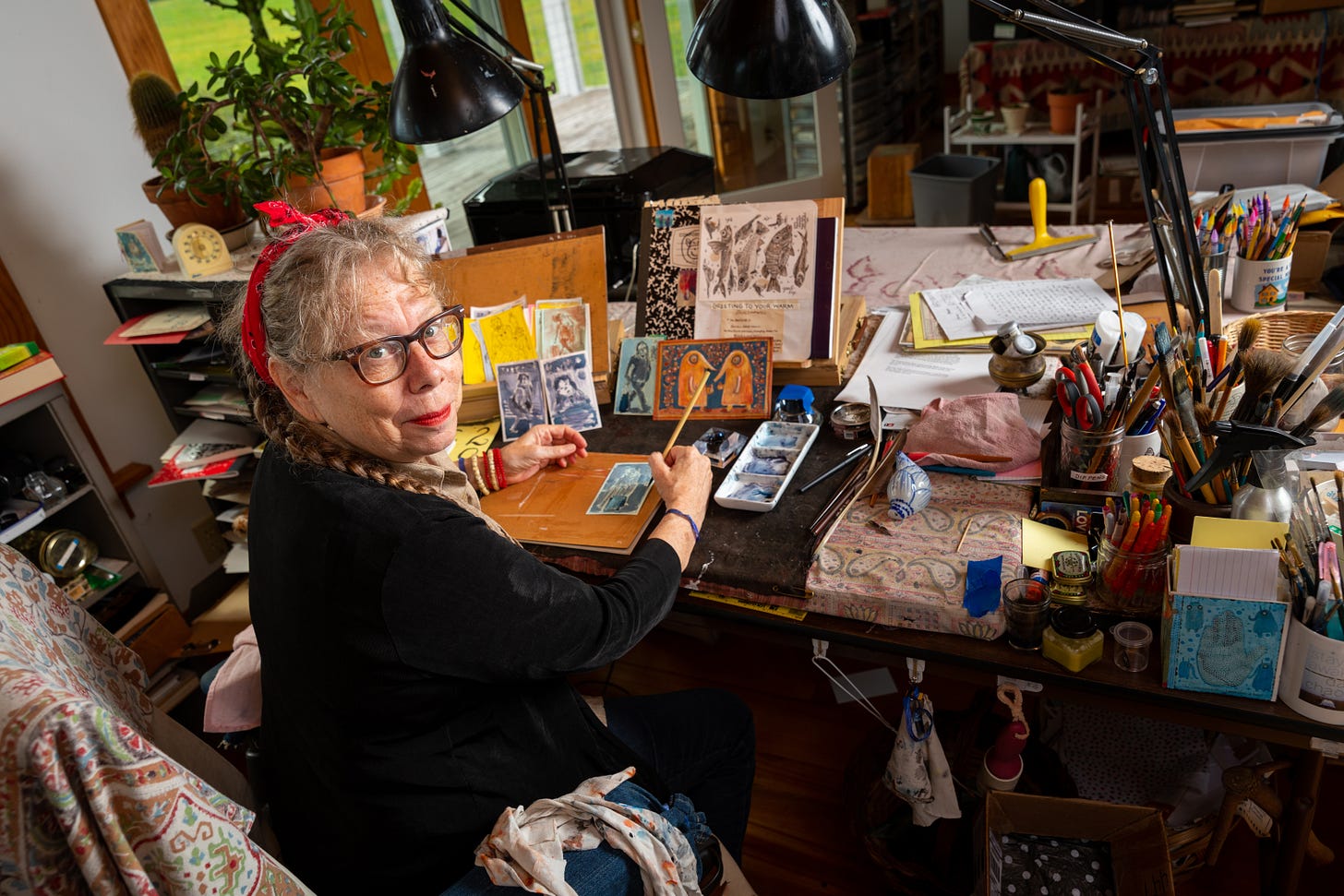
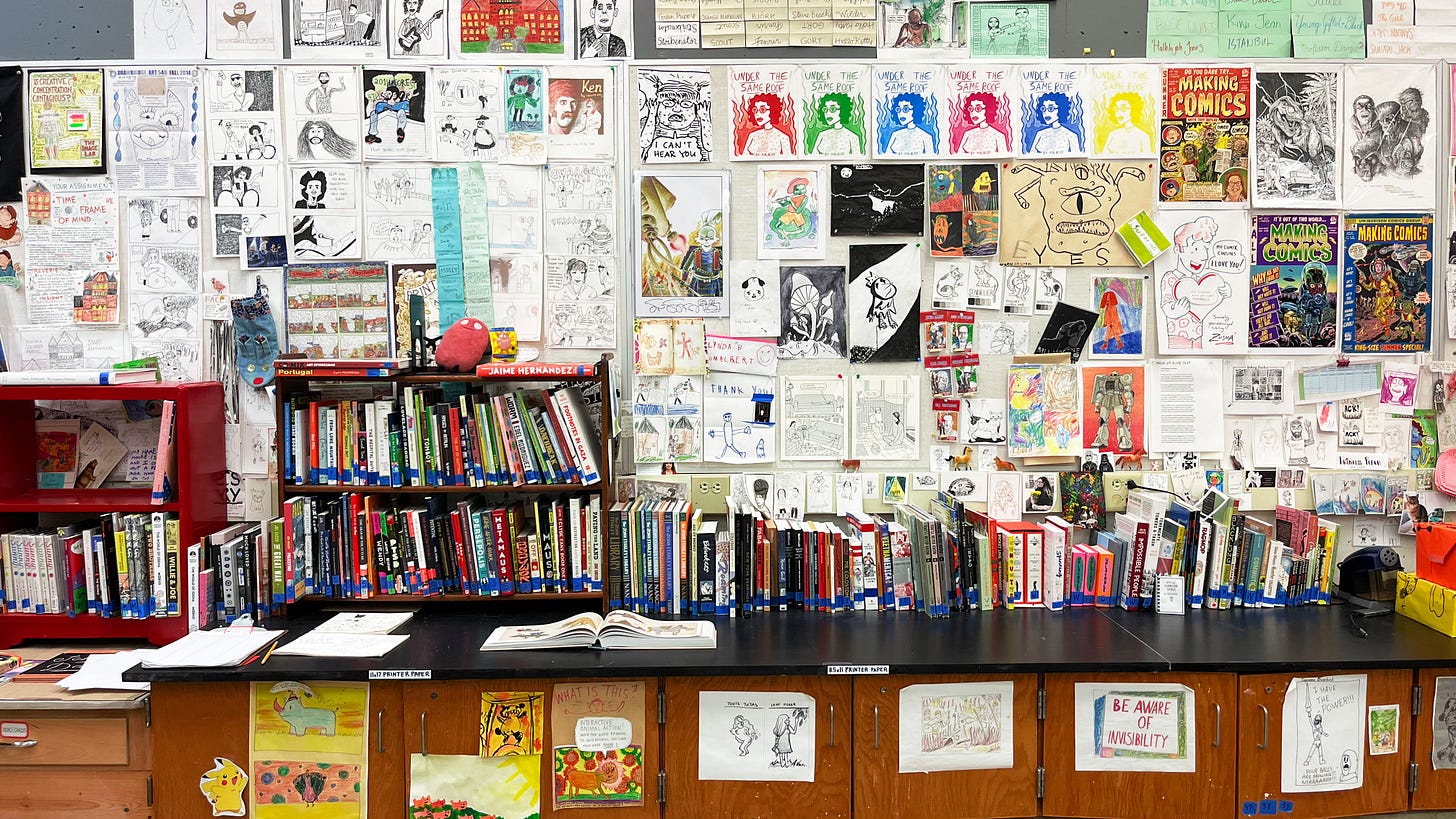
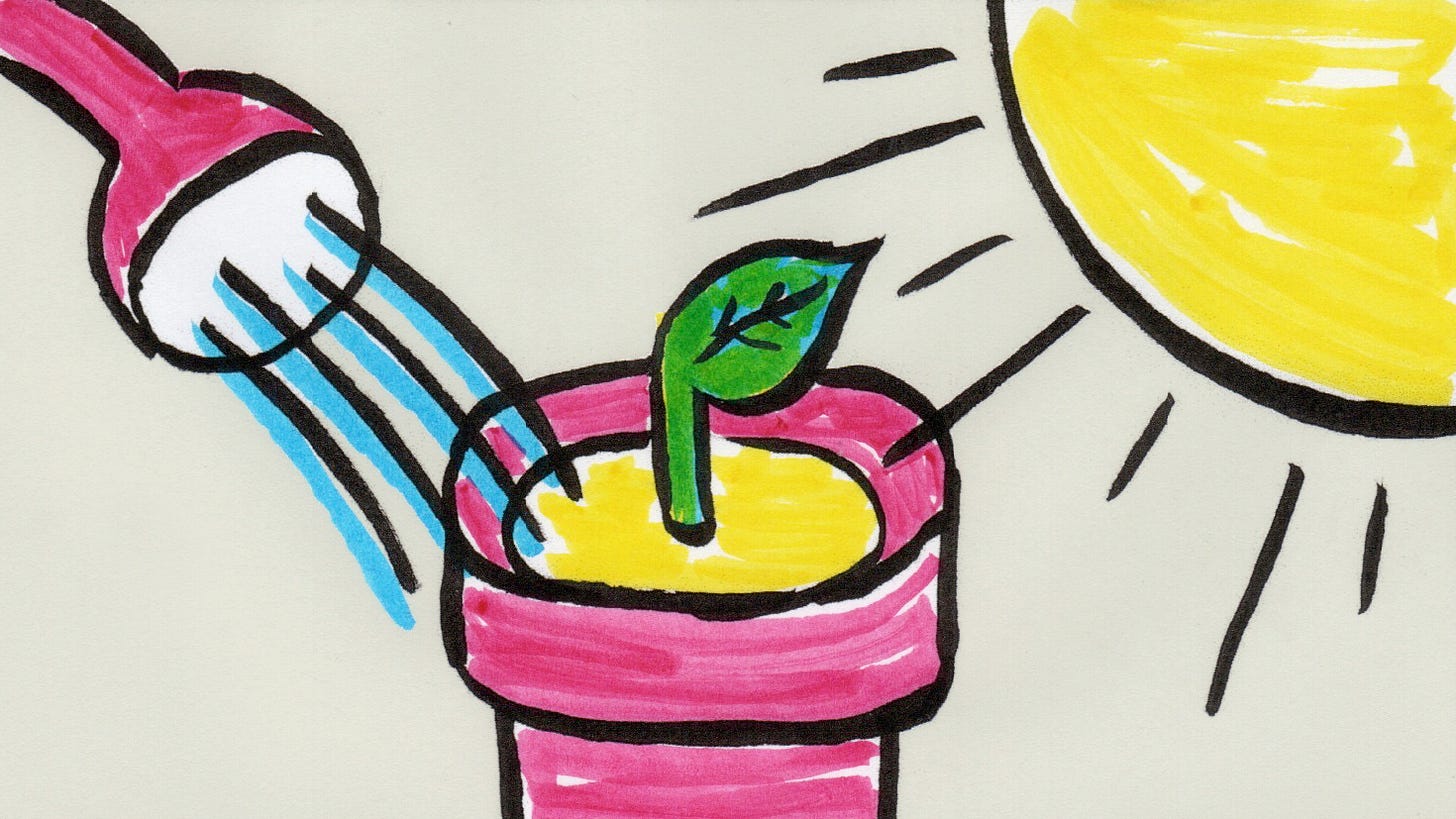
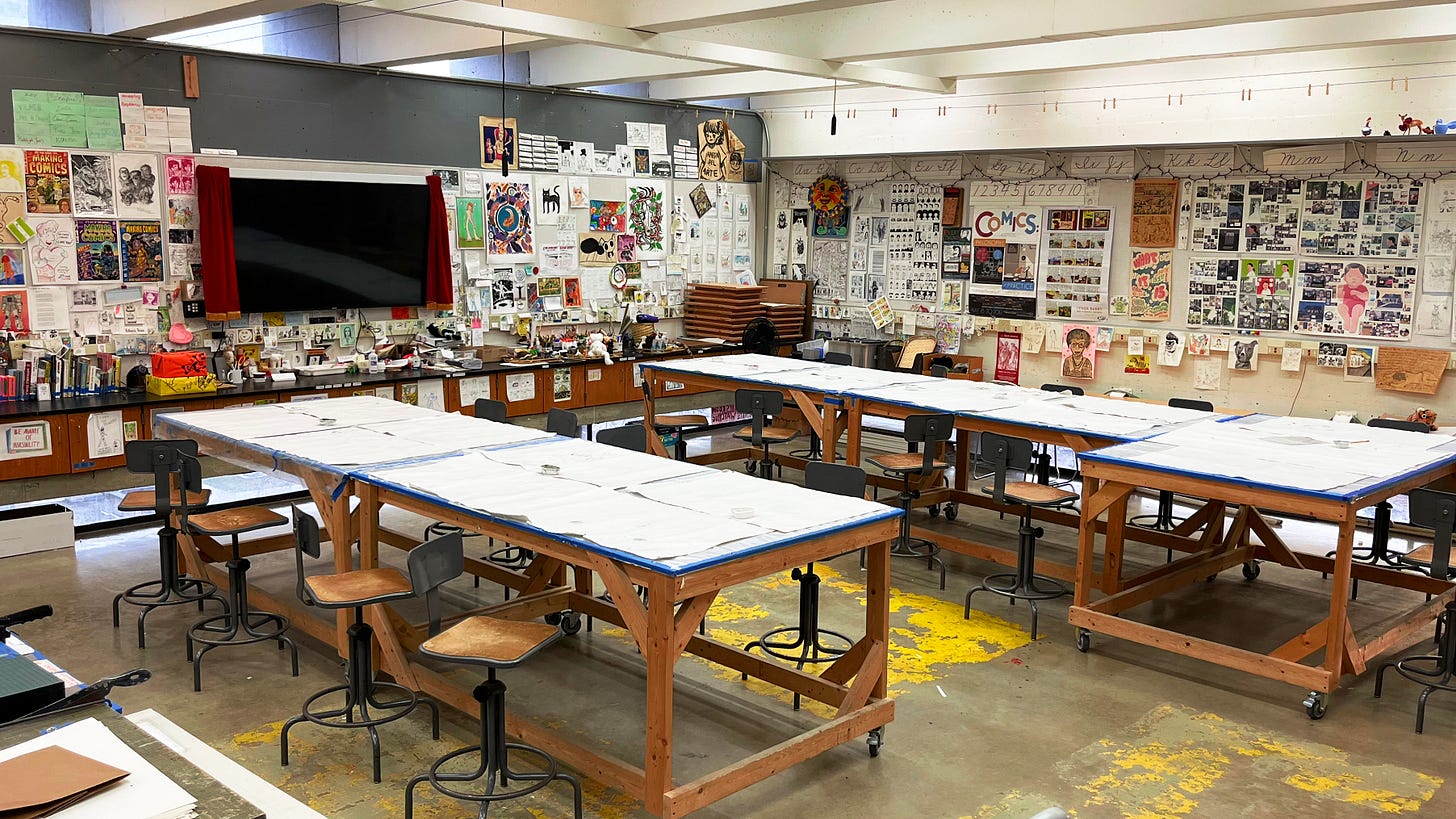
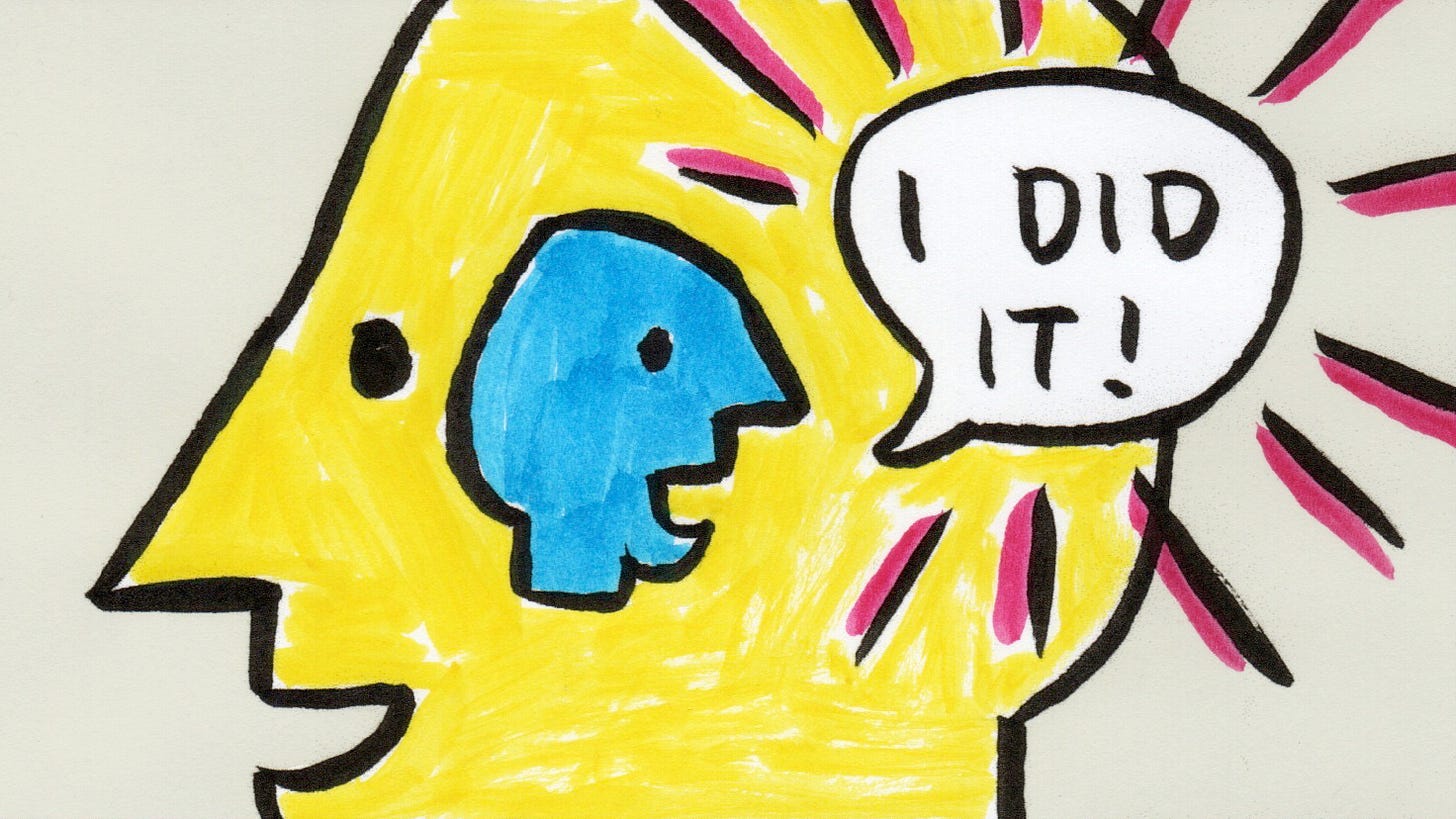

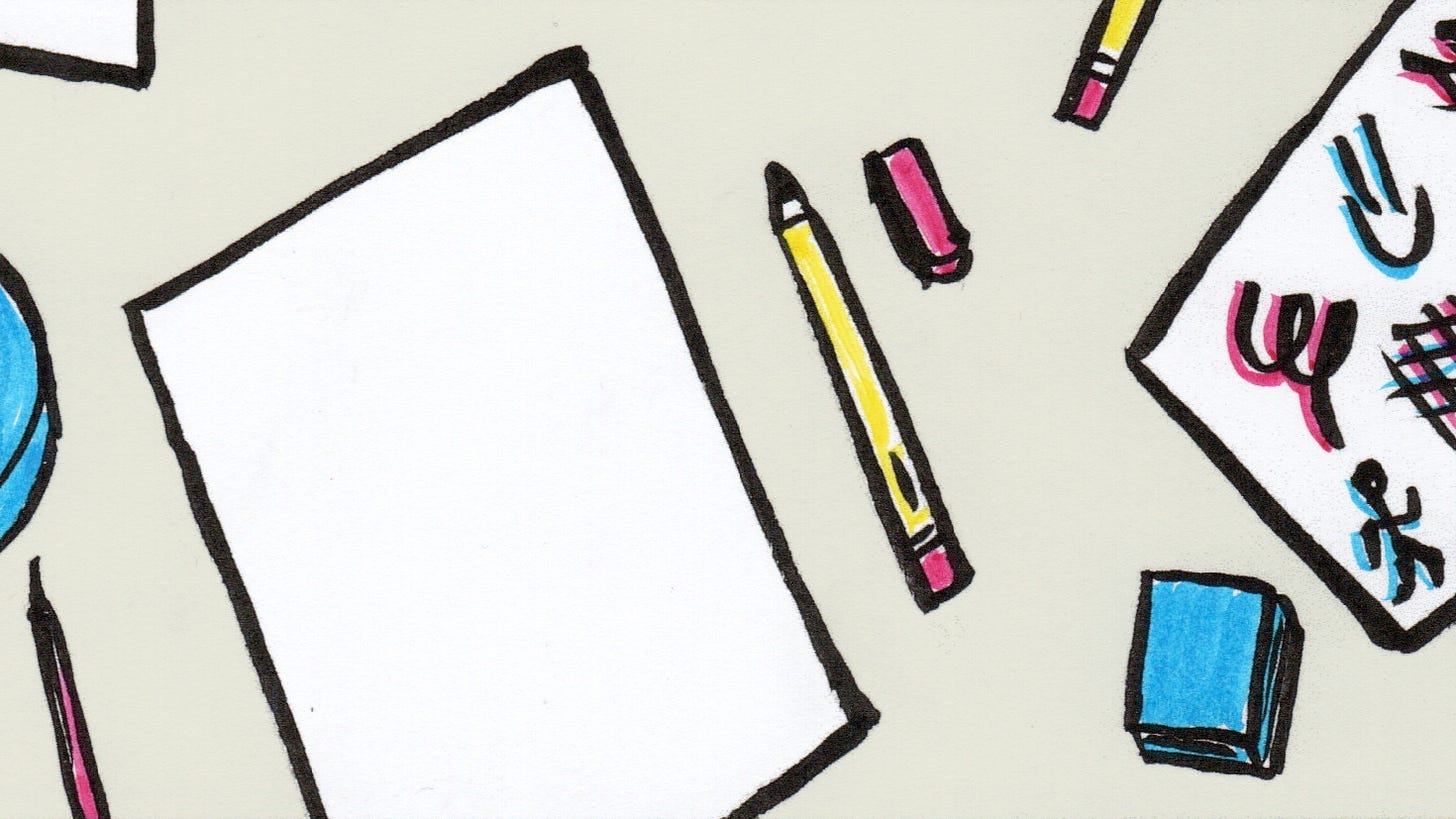
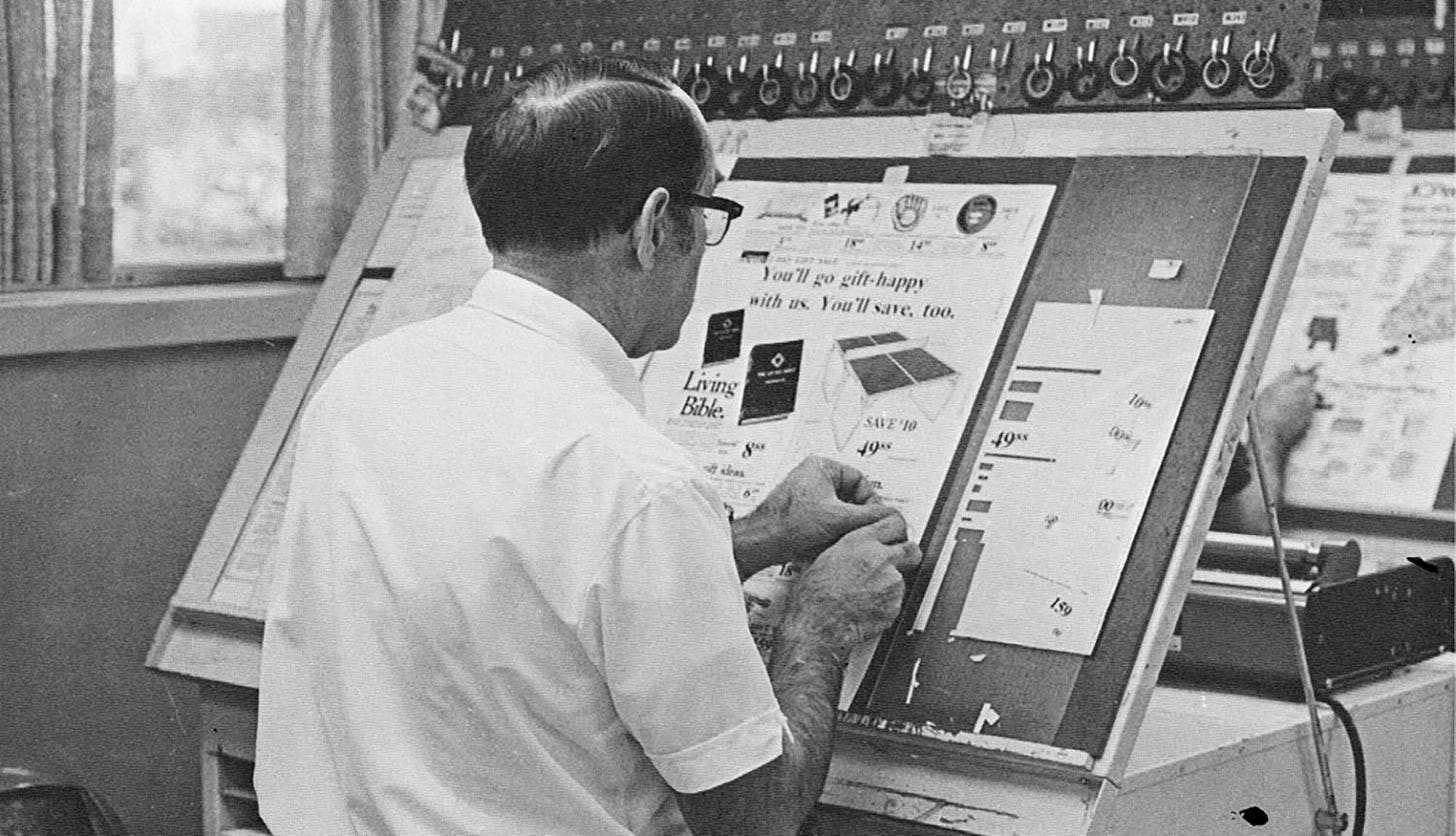
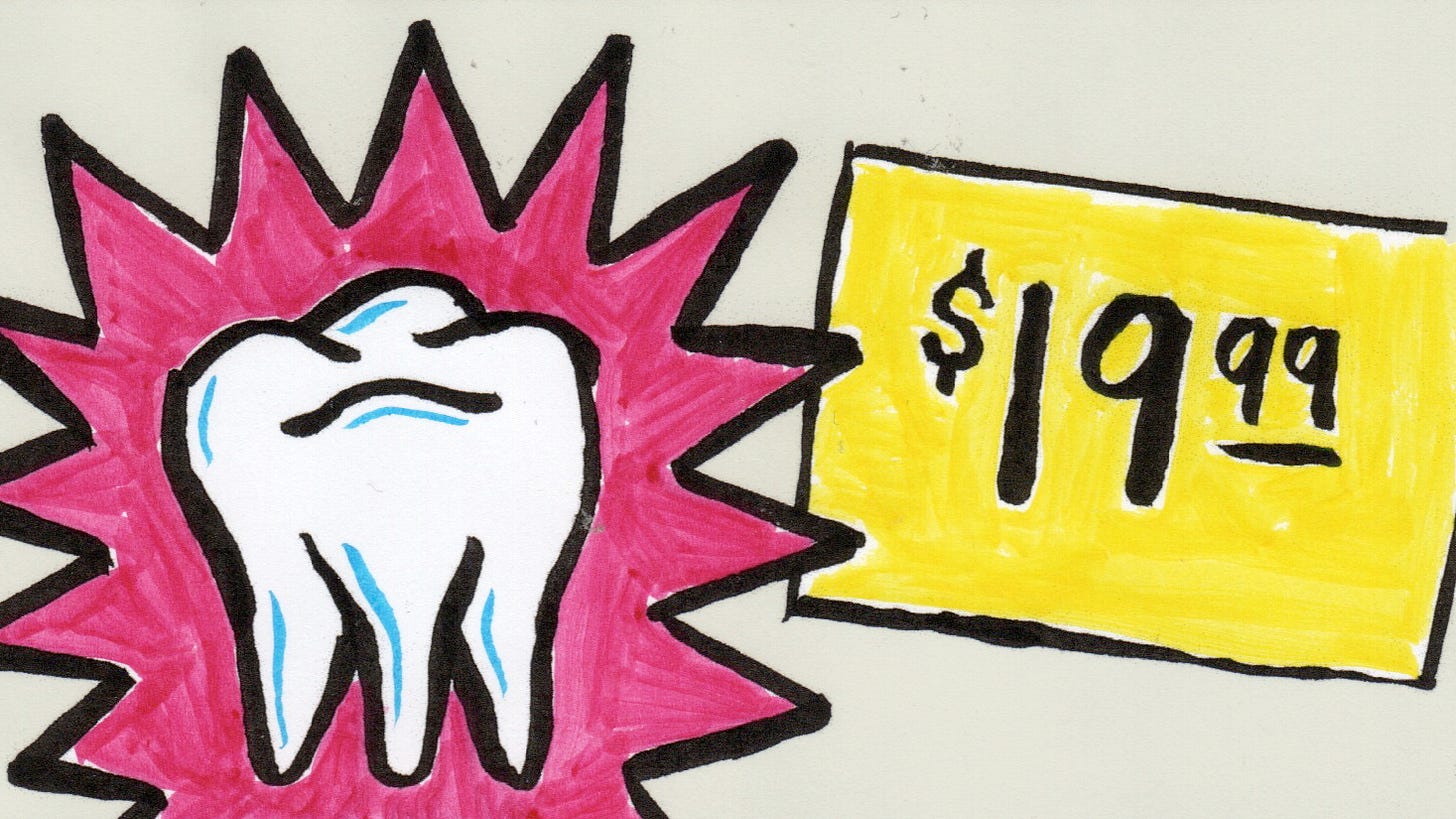
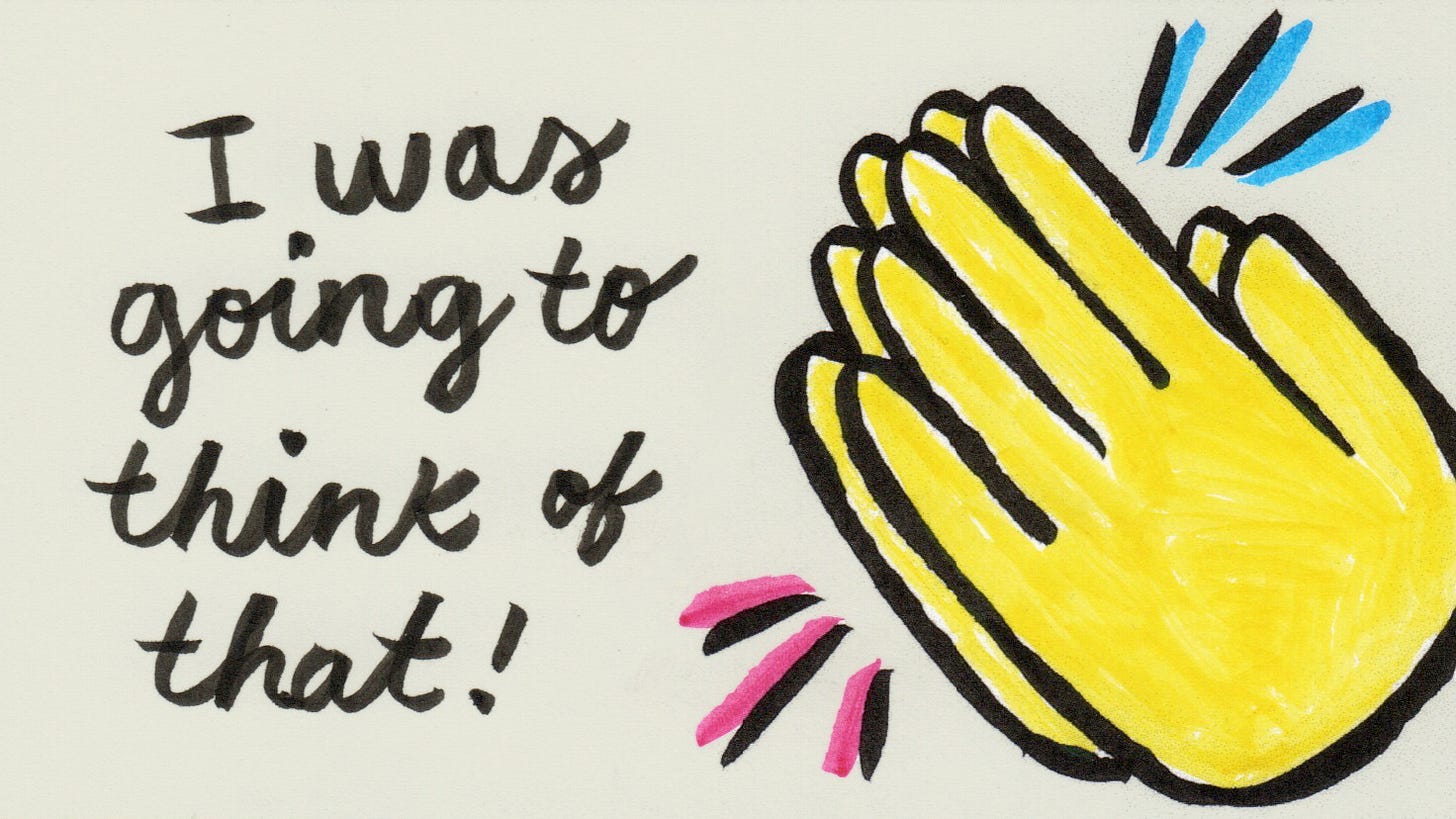

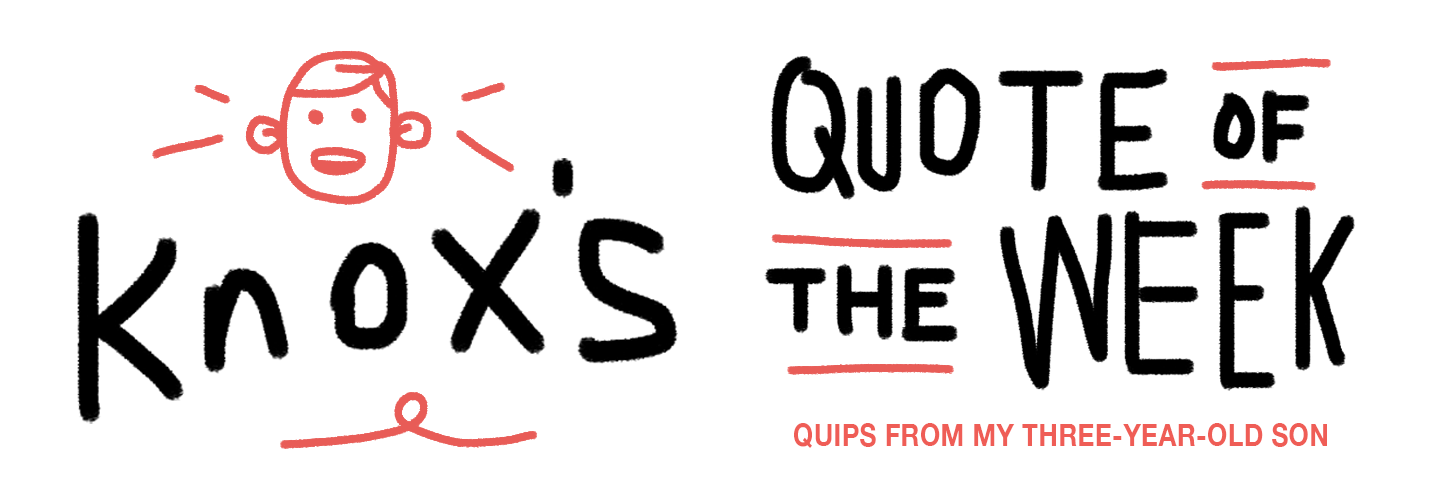
Awesome interview with one of my favorite people!!! Please tell Lynda substack needs her!! Will be eagerly awaiting her arrival!
I feel like I could print off 100 things from this post as inspirational posters - love all of this!